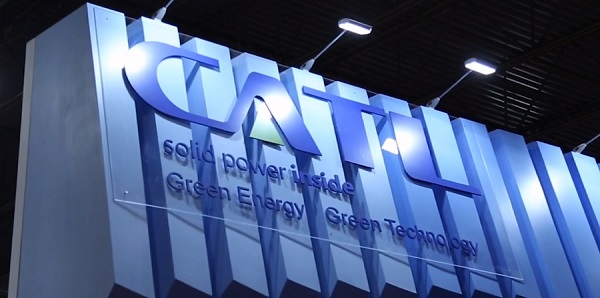Solving the core problems of users is the premise of full electrification. Around this core, the three major power battery solutions has been launched by CATL.
Innovation is the core competitiveness of CATL leading the TWh era. At the 2022 power battery conference, CATL has introduced to the market for the phased application results of CATL in new materials and new structures of power batteries.

CATL power batteries
1000+ km cruising range
The battery cell material adopts high nickel ternary + low silicon, with KR battery structure, suitable for B/C/C+ EV models
700+ km cruising range : M3P material of battery cells are used with KR battery structure, suitable for A/B EV models
300-500 + km cruising range: using sodium ion battery with CTP/AB lithium battery structure, suitable for A00/A0/A EV models.
M3P battery
The progress of M3P battery new materials, sodium-ion battery, KR battery technology and integrated intelligent EV chassis technology that the market is concerned about is as follows:
The M3P battery is a ternary lithium battery with a phosphate system, CATL screened new chemical materials through high-throughput computing to improve material voltage and low-temperature performance.
The energy density of the cell was increased by 10%-20%, and the energy density was better than that of LFP and the cost is lower than ternary.
Now the new material of M3P battery has been mass-produced and will be put into application next year.
Sodium-ion battery
The main problems of sodium-ion batteries are that the energy density is too low, the cathode electrode is easy to absorb water, and the consistency of the hard carbon anode electrode is difficult.
If its energy density cannot reach 140-150Wh/kg, it will be difficult to be popularized.
CATL has successfully improved the energy density of sodium-ion batteries through technological innovation in cathode materials and anode materials, overcoming the problem of mass production, and will soon use sodium-ion batteries in cars.
CTP 3.0 Kirin battery
The CATL CTP 3.0 Kirin battery has been released. The system integration has reached a new high in the world, the volume utilization rate has exceeded 72%, the system energy density has reached 255Wh/kg, and the vehicle cruising range has exceeded 1,000 kilometers.
The KR batteries will be launched in mass production in 2023.
CTC technology
In the next step, the company will develop towards CTC, integrating the battery pack with the EV chassis, the system energy density can achieve 265Wh/kg, and the volume utilization rate is greater than 75%. Mass production is expected in 2025.





